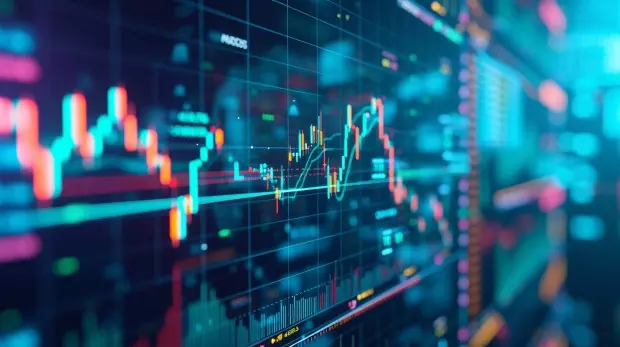(FLASH FRIDAY is a weekly content series looking at the past, present and future of capital markets trading and technology. FLASH FRIDAY is sponsored by Instinet, a Nomura company.)
In today’s equity markets, block trading is evolving fast, shaped by technology, shifting buy-side priorities, and a much more volatile trading environment.
 Jim Toes
Jim Toes
“There’s still a real need for block trading,” said Jim Toes, President and CEO of the Security Traders Association.
He said that consolidation within the asset management industry has led to fewer but much larger asset managers—as measured by AUM.
“Portfolio managers managing large positions in single stocks will always have a need for trading in block size,” he told Traders Magazine.
That need hasn’t gone away, but how blocks get executed, and what buy-side desks expect from the experience, looks very different than it did even a few years ago.
“Because of innovation and technology,” Toes explained, “large buyers and sellers who historically traded in one block, at one price, at one point in time, are now able to meet and have their trades matched off against each other in smaller sizes over the course of the day with parameters.”
Those parameters—ranging from acceptable price ranges to volume limits and time constraints—are now as important as the size of the order itself. That shift reflects a bigger change: for many on the buy-side, efficiency has overtaken scale as the top execution priority.
“The ability to source natural liquidity—not just large blocks—is very much on the buy-side’s mind,” said Jesse Forster, Head of Equity Market Structure & Technology at Coalition Greenwich. “It doesn’t have to be block-sized anymore. The focus is on finding liquidity efficiently, whether it’s block or not.”
According to Forster, over half of the buy-side prioritizes sourcing natural liquidity while their appetite for capital commitment from traditional sell-side banks has faded. “That doesn’t mean they don’t want block liquidity—but they’re exploring new avenues to get it.”
Historically, a bank could take on risk by filling a large order and managing the impact afterward, often smoothing losses through commissions or longer-term relationships. But today’s constraints—regulatory, risk-based, and economic—make that less feasible. As Forster described: “The banks don’t have the flexibility they once did. And the buy-side doesn’t necessarily want to create competition for themselves by dealing with someone who immediately has to unwind in the same direction.”
He said that market makers and single-dealer platforms (SDPs) are stepping into roles once dominated by banks. Moreover, these SDPs are natively electronic and can integrate more seamlessly into buy-side workflows. “If I can send a larger order to a market maker and have them fill me at the current market price, that’s much easier than slicing it up, figuring out which algos to use, and managing executions over time,” Forster pointed out.
He further said: “The buy-side is viewing liquidity differently. Finding a block isn’t the benchmark anymore. It’s about accessing liquidity without market impact, even if that means trading in smaller, more dynamic increments.”
 Jesse Forster
Jesse Forster
Looking ahead, Forster believes the focus will shift further away from the who and more toward the how of execution. “We might not be that far from a future where trading is more about the technology than the counterparty,” he said.
The Execution Management Systems (EMS) of the future will do far more than route orders—they’ll optimize them intelligently. “Eventually, the EMS will know which broker has the best performance in a name, who we owe research payments to, which strategies to use, what time of day is optimal, and more,” Forster said. “All those manual decisions a trader makes today—many of those will be automated.”
This applies to block trading as well: “The choice of venue and routing method will be technology-led,” he said.
Forster added the ultimate winners will be those who best serve the buy-side’s evolving needs. “Technology is moving fast. The buy-side wants smarter access, not just more access. Whoever can deliver that—banks, market makers, platforms—will take the lead.”
Toes agreed: “Block trading is about finding liquidity under the standards of best execution with minimal price impact. Whatever approach the buy-side takes will be guided by those primary goals.”
But if execution workflows are evolving, so too are the market conditions that influence them. Jeff O’Connor, Head of Equity Market Structure for the Americas at Liquidnet, emphasized that appetite for block trading is cyclical—not permanently fading.
“Block appetite is dictated by conditions,” he said. “2024 was a near-perfect backdrop—real price volatility was down, correlations were low, and U.S. macro readings and corporate results were solid.”Just before the turn of the calendar year, the Fed pivoted on their interest rate message, becoming more hawkish, and the cloud of uncertainty was coming in regarding inflation, and in particular, the variable of tariff induced pressure, he said.
“So almost perfectly with the turn of the year conditions shifted considerably. Namely, higher risk variance in trading. Average trade sizes drop, spreads widen, depth of book depletes, and real price volatility is spiking,” he said.
Overall, a much more difficult environment for traditional fundamental asset managers to get in and out of positions, and do so with conviction, O’Connor said.
“When variance is high, so is the fear of adverse selection, and block appetite drops,” he said.
In these environments, traders often shift toward schedule-based algorithms. “When variance rises, so does the use of schedule based algos. While presenting somewhat of a callus around the fear of picking a price in time block, the tactic also suffers from severe underperformance or outperformance as sharp mis-directions and volume bursts make the trade fallible as well,” O’Connor noted.
 Jeff O’Connor
Jeff O’Connor
In the current environment, close to 45% of total market volumes are sourced from non-bank market makers/HFT, according to O’Connor.
He said that these counterparties flourish at both exchanges and ATS’s.
“Performance metrics need to be closely watched, but moving from blockier trading to fragmented small-sized child orders does change the makeup of the contra and that is not always seen as attractive,” he said.
“But the natural procession to a more spread-out trade, along with a mixing shift of liquidity sources, is dictated by market conditions, rather than a secular shift away from a particular method of trading,” he emphasized.
There’s also a strategic value to blocks that’s often overlooked: they help take risk variance out of the trade, O’Connor said, adding that these same tough conditions existed in 2022 into 2023 as uncertainty brought high levels of trepidation for traditional asset managers.
“That continuous institutional flow is a key metric in improving both spreads and depth. When correlations are high, as they have been for most of 2025, stocks are trading in lock-step, and it isn’t a ripe environment for a fundamental manager to stand out on individual bets,” he said.
“As the macro setting comes better into scope, apprehension drops, and those flows become more consistent – improving overall conditions. When a Trader/PM has that conviction in their trade, the block becomes the most attractive way to execute and provide little signal to the market that they are getting into or out of that position,” he said.
